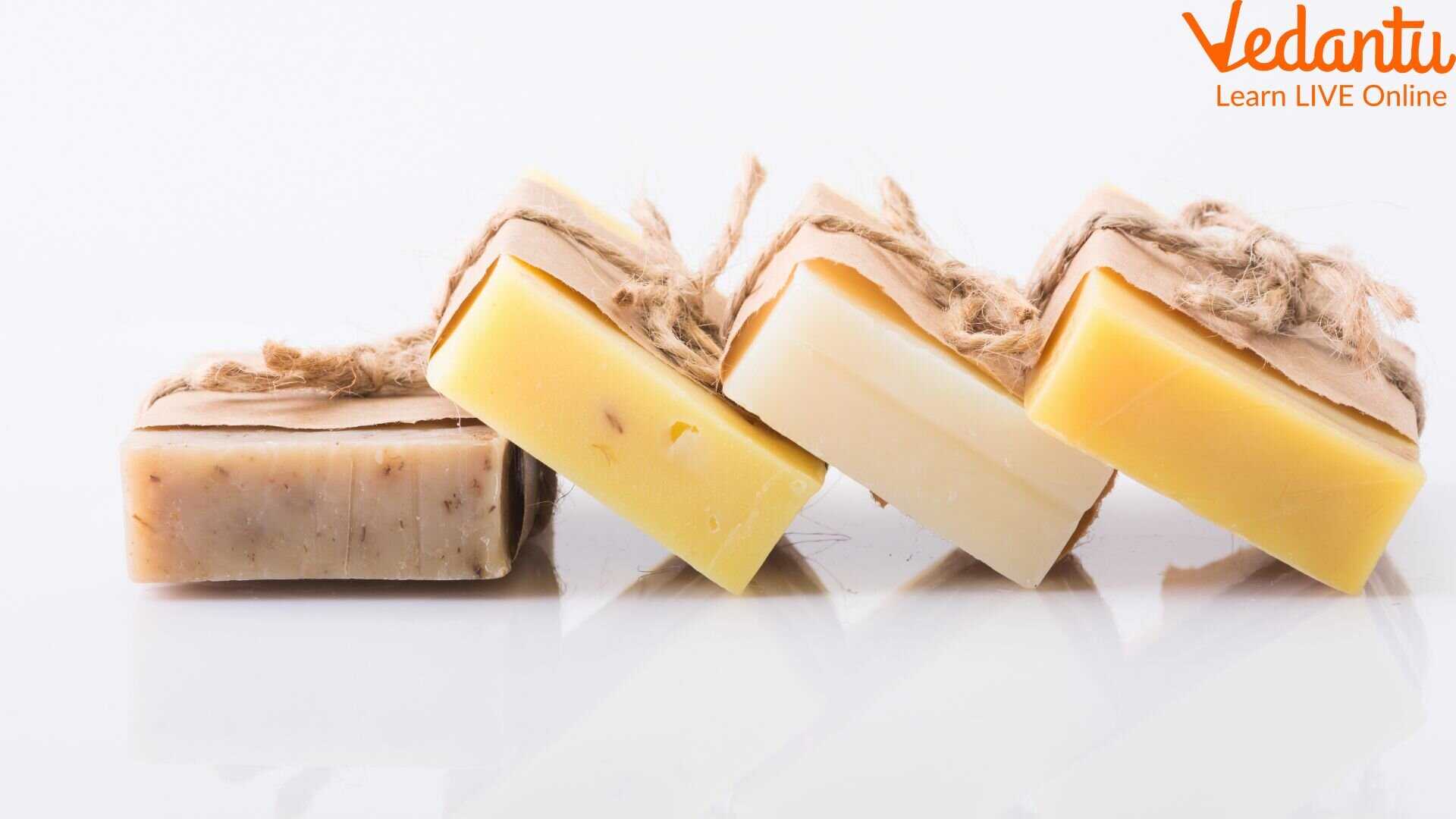Mechanism of Action of Soaps
Among various inventions, soaps are probably the best and most useful ones for our daily chores. Whether we need to wash our hands or clothes, we need soap to do it. How does this soap work? The mechanism of action is pure science.
To understand how soap works, we need to delve deeper and find out the science behind it. For this, we need to find out all about soap and its basic chemical composition. It will give us a clear idea of the cleansing effect of soaps.
What is Soap?
Soap is a formulation of sodium or potassium salts of fatty acids that conduct the chemical reaction of saponification in a water solution. The salts are formed by neutralising fatty acids collected from plant and animal sources.
The salts formed are the prime ingredients of the chemical composition of soap. These salts get hydrolysed in water and form soap bubbles. This chemical reaction causes the formation of bubbles surrounding the dirt and thus cleans the surface on which it acts. In a nutshell, soaps are formulations that are used to clean or wash something.
How Do Soaps Work?
To understand the action of soaps in water solutions, we need to delve deeper and understand the meaning of saponification.
As mentioned earlier, soap contains sodium and potassium salts of fatty acids. These organic acids are collected from plant and animal fat. The salts formed have a hydrophilic end in the form of metal ions and a hydrophobic end in the form of fatty acid or carboxylate group.
These salts act as surfactants that can clean dirt from targeted surfaces. These salts do not get mixed naturally in water. When soap is mixed, the molecules float in a significant way. The hydrophilic ends remain inside the water and the hydrophobic ends float above the water for obvious reasons. These units are called micelles.
When thoroughly mixed or rinsed with dirt, they show their emulsifying effect. Dirt is generally oily. It is hard to remove completely with water. When a dirty cloth is rinsed in water containing soap, the dirt attracts the hydrophobic ends of the salts.
These ends surround the dirt and form micro units of spheres. In these spheres, the hydrophobic ends of the micelles trap the dirt inside and form emulsified granules. The other hydrophilic ends remain outside the spheres facing the water molecules.
In this way, all the dirt present in a cloth or hands is removed using this micelle formation. Hence, the saponification reaction results in the dispersion of dirt in the water. We see them in the form of bubbles.

Soaps and Its Uses
Why do Oil and Grease Get Removed by Soaps?
If we delve deeper into the chemical nature of this reaction, we will understand that the oily and greasy dirt is hydrophobic in nature. It means this type of dirt is hard to remove using water as it repels water. This is where soap works like a charm.
As mentioned earlier, soaps clean surfaces on the principle based on emulsification. Soaps are produced using saponification. The micelles formed by the fatty acid salts of sodium and potassium gather around the dirt and convert them into small globules. The hydrophobic ends of micelles love to pair with the oily and greasy dirt-forming spheres.
This is the reason why oil and grease can get easily removed using soaps and detergents. This surfactant effect of soaps makes it easier to remove dirt from clothes, skin, utensils, or any surface. Different types of formulations are prepared based on their applications in various industrial and domestic segments.
History of Soaps
The earliest historical anecdote of soap and its uses dates back to 2800 BC. It was in ancient Babylon. The people had the least idea of chemistry but had good observation power. They learned that some materials are quite good at removing dirt or oily remnants. They started mixing these substances with water to create an aqueous medium for cleaning various items.
How Soap is Made?
Soap is the formulation containing sodium and potassium salts of fatty acids recovered from plant and animal fat. The modern process is called saponification. It is a chemical reaction where fatty acids present in the lipid, oil, and fat collected from plant and animal sources are reduced to smaller units.
These units of long-chained fatty acids then react with an alkali (sodium or potassium hydroxide) to form salts and alcohol as products. The long-chain carboxylic ends of the soap molecules are hydrophobic in nature and the metal ionic ends are hydrophilic in nature.
The salts are then added to a formulation containing other ingredients for fragrance, colour, texture, etc. Once the formulation solidifies, it is cut into small pieces to form soaps. These pieces are then packed into lucrative packages to sell.
Uses of Soap
Soaps are used to clean dirt from clothes, skin, utensils, and other surfaces.
Medicated soaps are used for disinfection. It can be used for cleaning and disinfecting hands. It is also used for skin diseases and treating sores.
Proper use of soaps can lead to less occurrence of diseases caused by contamination such as dysentery, diarrhoea, etc.
Soaps can be used for lubrication purposes.
It can also be used for killing pests.
Soaps can also be used for keeping drawers, closets, wardrobes, and cabinets fresh.
Conclusion
Soaps are thus a brilliant invention that enables us to clean things faster. The formulation of soaps helps us to remove oily and greasy dirt easily. Soaps are the ideal medium for disinfection, sanitation, and cleansing.
You will be surprised to know that nearly 2.3 billion people still don’t have access to proper sanitation. This is where soaps can be the perfect medium. It is a cost-efficient and user-friendly solution to our basic needs of sanitation and disinfection.







